My 10-year stint with business analytics at Fortune 500 companies has shown me both remarkable investments and puzzling gaps. The numbers tell an interesting story: 64.8% of Fortune 1000 companies pour over $50 million into their analytics programs. Yet only 14.6% manage to successfully use these technologies throughout their operations.
A decade of hands-on experience has taught me that success doesn’t depend on fancy tools or big budgets alone. The Bureau of Labor Statistics predicts operations research positions will grow by 23% by 2032. Still, companies struggle to implement these solutions effectively. This gap between spending and results has given me unique insights about business intelligence and analytics – things you won’t find in any textbook.
Let me share practical lessons from my work with Fortune 500 companies. You’ll learn what really works, what fails, and why conventional methods often miss the mark.
What Is Business Analytics: Reality vs. Textbook Definitions
The textbooks define business analytics as “the use of math and statistics to collect, analyze, and interpret data to make better business decisions”. My experience in the field shows a much more complex picture.
The practical definition after a decade in the trenches
Textbook definitions paint business analytics as a straightforward process. The reality I’ve seen tells a different story. Business analytics transforms raw, often imperfect data into useful insights. This happens while dealing with organizational limits, competing priorities, and technology constraints.
My experience shows that business analytics combines four distinct approaches:
- Descriptive analytics interprets historical data to identify trends and patterns
- Diagnostic analytics determines why something happened
- Predictive analytics forecasts future outcomes using statistical methods
- Prescriptive analytics tests scenarios to determine optimal solutions
Textbooks treat these as separate disciplines. Companies of all sizes blend these approaches based on their needs and resources. Analytics success depends on company culture, data accessibility, and executive support.
How Fortune 500 companies actually use analytics
Beyond the buzz, Fortune 500 companies use analytics in down-to-earth ways. Walmart uses Natural Language Processing to improve website search results and voice recognition for their ordering system. This helps them pick the most likely brand and size for customers’ carts based on previous purchases.
Amazon uses analytics to summarize product reviews and has created palm-based payment systems using GenAI. PepsiCo built a cloud-based analytics platform called Pep Worx. This platform guides product merchandising decisions and drove 80% of a specific product’s sales growth in its first year.
The numbers tell an interesting story. About 64.8% of Fortune 1000 companies have invested at least $50 million in business analytics. Yet only 14.6% have successfully implemented these technologies throughout their operations. This gap between investment and implementation proves a simple truth: analytics needs proper integration with business processes.
Fortune 500 companies use analytics as a practical tool to solve specific business problems. They optimize supply chains, predict customer behavior, and make market entry decisions. The goal remains simple – turning data into measurable business results.
The Four Pillars of Successful Business Data Analytics
My ten years of experience in Fortune 500 analytics have taught me about four key pillars. These pillars determine if business data analytics initiatives succeed or fail. They go beyond specific industries and tech stacks and are the foundations of successful analytics programs.
Data quality foundations
Data quality is the lifeblood of successful analytics. Gartner reports show that bad data quality costs organizations USD 12.9 million each year. My experience proves that you need accurate, complete, consistent, timely, and relevant data. Companies need strong data governance practices and quality standards before they start complex analytics projects. The most advanced algorithms will give misleading results without this foundation—garbage in, garbage out.
Cross-functional team structures
Analytics works best when it bridges technical expertise and business knowledge. Teams that work across departments perform better than isolated groups. These teams should mix data scientists, engineers, analysts, and business stakeholders who work together toward common goals. Research shows that data visualization helps teams communicate with non-technical stakeholders. Successful teams create a shared language about data and avoid technical jargon in business presentations.
Executive sponsorship
You need executive support to make analytics successful. Prosci research shows that projects with very effective sponsors succeed 72% of the time. Projects with ineffective sponsors only succeed 29% of the time. The ideal sponsor comes from the business side instead of IT. They should have enough authority across departments and a personal interest in the analytics program’s success.
Continuous improvement frameworks
Analytics should be an ongoing process, not a one-time project. A continuous improvement system helps organizations build better analytics capabilities. Many Fortune 500 companies set up feedback loops that check analytics performance against business results. They start by setting clear metrics. Then they measure performance, analyze results, improve processes, and keep making changes. This creates an ongoing cycle of evidence-based improvements.
Implementing Analytics in Business: A Proven Roadmap
Data analytics implementation needs a balanced approach between ambition and practicality. My work with Fortune 500 companies shows that successful organizations follow a clear roadmap instead of rushing into company-wide initiatives.
Starting small: The pilot project approach
Pilot projects are a great way to get quick analytics value. Successful pilots share key characteristics:
- Clear business focus: Define specific business objectives rather than pursuing “analytics for analytics’ sake”
- Solid architecture: Build pilots on frameworks that can grow beyond the original project
- Security and compliance: Add proper data security from the start to avoid future complications
My Fortune 500 experience shows that pilots should deliver results within 2-3 months to build momentum and trust. The right tools make a difference—start simple with technologies that can grow as your program expands.
Scaling analytics across departments
A successful pilot sets the stage for careful expansion. McKinsey research shows that creating a dedicated analytics Center of Excellence (COE) improves success rates by a lot. Organizations with COEs apply advanced analytics to 55% more use cases than those without.
The first step is to create cross-functional teams with both technical experts and business stakeholders. The next priority becomes standardizing methods to ensure consistent analytics approaches in all departments.
Measuring and communicating impact
Your ability to communicate with stakeholders can make or break analytics initiatives. The best strategy adapts your message for different audiences. Analytics outcomes should always connect to specific business metrics that executives value.
Leadership responds best when you measure potential value through metrics like revenue effect, cost savings, or customer satisfaction.
Overcoming resistance to data-driven decisions
Many organizations struggle with resistance to data-driven approaches. A Wavestone survey reveals that over two-thirds of Fortune 1000 executives see changing company culture as their biggest challenge in becoming more data-driven.
The solution combines both top-down and bottom-up strategies. Good training programs and user-friendly platforms help employees at all levels adapt more easily to the change.
Business Intelligence and Analytics: Combining Art and Science
The sort of thing I love about my experience through business analytics is the tension between data and intuition. Fortune 500 executives still make vital decisions based on gut feelings—sometimes rightly so—even after massive investments in data systems.
At the time to trust the data vs. at the time to trust your gut
Research shows data-driven organizations are three times more likely to report most important improvements in decision making. In spite of that, data alone can’t always paint the complete picture, especially when you have ambiguous issues. Harvard Business School research reveals that gut feelings become valuable in uncertain circumstances where more data won’t sway the decision. Executives face this reality with novel market conditions where historical patterns don’t apply.
Under Armor’s senior manager Jack Sinden believes analytics departments must show value and vision—this requires both quantitative evidence and intuitive judgment. Pattern recognition becomes the foundation here; our brains are wired this way, though we must manage it to avoid bias.
Balancing quantitative analysis with qualitative insights
Quantitative analytics involves looking at hard data and actual numbers that strip away ambiguity of language and emotion. Qualitative analytics addresses subjective characteristics that numbers can’t express. These approaches work together rather than compete with each other.
Google’s Project Oxygen compared data from over 10,000 performance reviews—including substantial qualitative sections—to learn about high-performing manager behaviors. This combination created detailed insights beyond what either approach could provide alone.
The human element in analytics for business
The “human element” remains a common challenge in getting value from analytics, despite advances in automation. The core team cites culture, collaboration, and skills as the biggest challenges throughout the analytics lifecycle. Many overlook how soft skills like communication help stakeholders understand technical findings.
Curinos’ CCO Sona Jepsen explains, “Intuition has been particularly helpful when the data is limited, ambiguous, or uncertain”. Human expertise helps arrange analytics initiatives with strategic goals, consumer expectations, and corporate values.
Conclusion
My decade-long experience in Fortune 500 analytics has shown that success goes beyond fancy tools and massive budgets. Companies pour millions into analytics initiatives, but implementation and cultural adoption make the real difference.
Data-driven decisions produce results – that’s undeniable. The most successful companies know analytics excellence needs both scientific rigor and human judgment. They build strong foundations with quality data and collaborative efforts. Executive support and continuous improvement frameworks complete the picture.
The way ahead looks clear. Companies should start small and prove value through focused pilots. Then they can scale methodically. Some resistance to data-driven approaches still exists, but companies that blend analytics with business expertise gain huge competitive edges.
I’ve seen countless analytics implementations firsthand. The future belongs to organizations that balance data and intuition perfectly. Companies will thrive when they build reliable analytics capabilities while keeping the human element intact. This matters even more as our business world becomes increasingly data-driven.








Leave a Reply